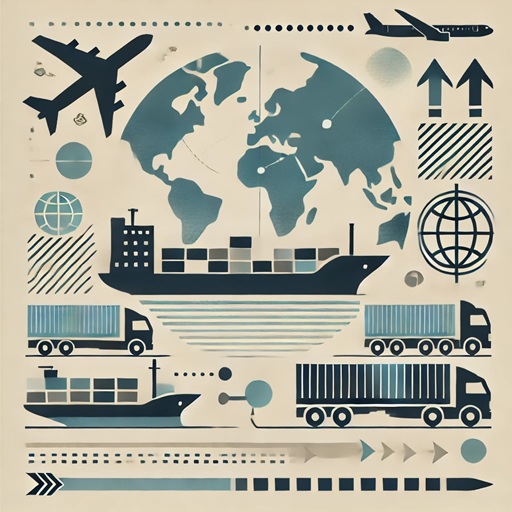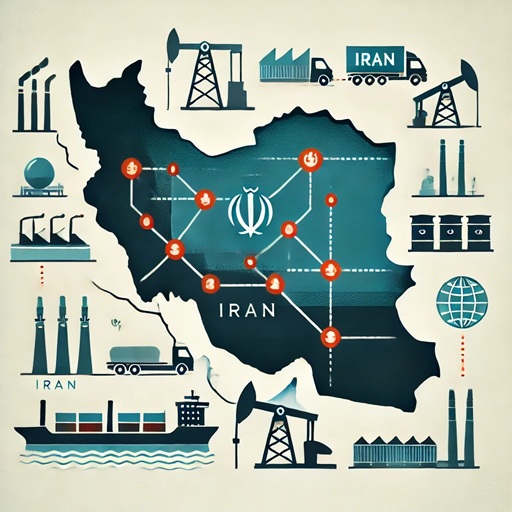Iran’s economy is a topic of significant interest, both regionally and globally. Despite its rich natural resources and strategic location, Iran faces a range of economic challenges that affect business owners, managers, and policymakers. Understanding these issues can help businesses navigate the complexities of the Iranian market and identify potential opportunities.
- Economic Overview
Iran’s economy is diverse, with key sectors including oil and gas, agriculture, manufacturing, and services. According to the World Bank, Iran’s GDP was approximately $240 billion in 2022, making it one of the largest economies in the Middle East. However, its growth potential has been limited due to various internal and external factors.
Iran possesses the world’s second-largest natural gas reserves and the fourth-largest proven crude oil reserves. Despite these assets, the country’s heavy dependence on oil revenues has made its economy vulnerable to price fluctuations and sanctions.
- Key Challenges Facing Iran’s Economy
- Economic Sanctions
One of the most pressing challenges for Iran’s economy is the impact of international sanctions, particularly those imposed by the United States. These sanctions have restricted Iran’s ability to trade freely, access global financial markets, and attract foreign investment. Businesses operating in Iran must navigate these limitations carefully, especially when dealing with international partners.
- Inflation and Currency Instability
Inflation remains a persistent problem in Iran, with rates often exceeding 30% in recent years. The devaluation of the Iranian rial has further eroded purchasing power and created uncertainty for businesses. For importers and exporters, currency instability complicates pricing strategies, profit margins, and financial planning.
- Bureaucracy and Regulatory Hurdles
Doing business in Iran often involves navigating complex regulations and bureaucratic processes. Licensing, permits, and compliance requirements can be time-consuming and costly. This regulatory environment discourages foreign investment and hampers the growth of domestic enterprises.
- Unemployment and Brain Drain
High unemployment rates, particularly among the youth, pose a significant challenge. Many educated Iranians seek opportunities abroad, leading to a brain drain that deprives the country of skilled professionals. For businesses, this translates into a limited pool of qualified talent.
- Limited Access to Technology
While Iran has a growing technology sector, access to modern technologies is constrained by sanctions and import restrictions. This limits the ability of businesses to adopt advanced solutions and remain competitive in a global market.
- Opportunities Amid Challenges
Despite these issues, Iran’s economy offers numerous opportunities for businesses willing to navigate its complexities.
- Untapped Markets
Iran’s large and youthful population creates demand for consumer goods, healthcare, education, and technology. Entrepreneurs who can meet these needs have significant growth potential.
- Strategic Location
Situated at the crossroads of Europe, Asia, and the Middle East, Iran serves as a strategic hub for trade. Businesses involved in logistics and supply chain management can benefit from this geographical advantage.
- Diversification Efforts
The Iranian government has made efforts to diversify the economy by promoting non-oil sectors such as agriculture, mining, and tourism. These initiatives create opportunities for investment and partnerships in emerging industries.
- Growing Digital Economy
Iran’s digital economy is expanding rapidly, driven by a young, tech-savvy population. E-commerce, fintech, and software development are sectors with significant growth potential, even under the constraints of sanctions.
- Practical Advice for Business Owners and Managers
For those interested in entering or expanding within the Iranian market, the following strategies can help mitigate risks and maximize opportunities:
- Understand the Legal Landscape: Familiarize yourself with local laws and international regulations to ensure compliance.
- Build Local Partnerships: Collaborate with reputable Iranian firms to navigate the market more effectively.
- Focus on Non-Sanctioned Sectors: Identify industries and products that are not subject to international restrictions.
- Adopt a Long-Term Perspective: Be prepared for challenges in the short term and focus on sustainable growth.
- Invest in Local Talent: Provide training and development opportunities to build a skilled workforce.
- The Road Ahead
Iran’s economic challenges are significant, but they are not insurmountable. By leveraging its natural resources, strategic location, and human capital, Iran has the potential to achieve sustainable growth. For business owners and managers, understanding the complexities of the Iranian economy is essential for making informed decisions.
While uncertainties remain, particularly regarding sanctions and political developments, businesses that approach the Iranian market with a well-informed strategy can find opportunities for success.
References
- World Bank: Iran’s Economic Data (2022)
- International Monetary Fund (IMF): Regional Economic Outlook, Middle East and Central Asia (2023)
- Statistical Center of Iran: Annual Reports (2023)
- Reuters: “Iran’s Inflation Trends” (2024)
- Financial Tribune: Insights into Iran’s Business Environment (2024)














